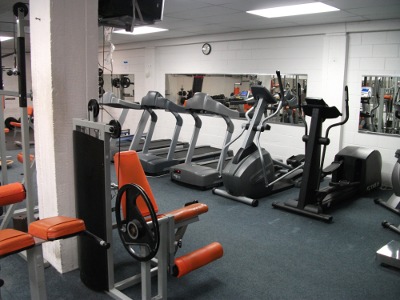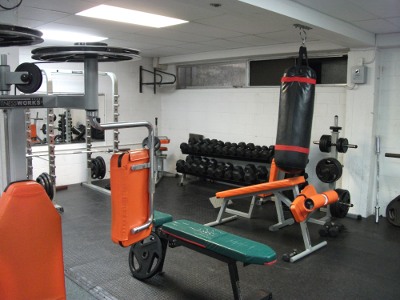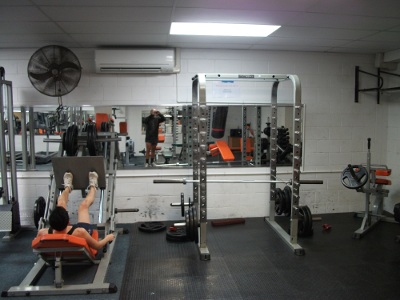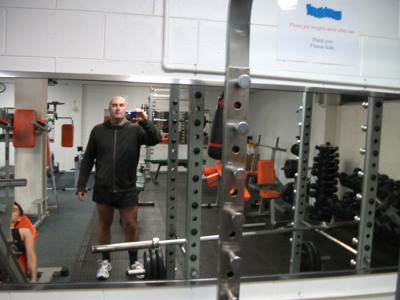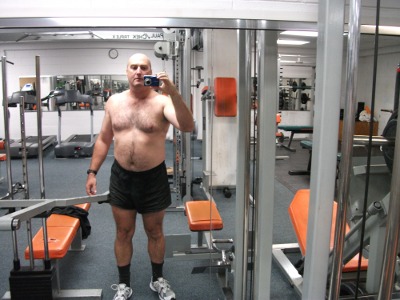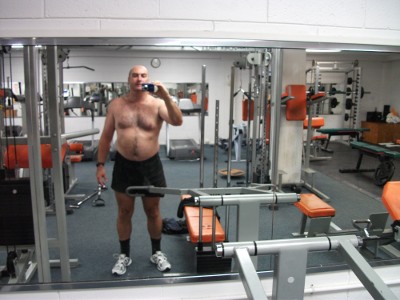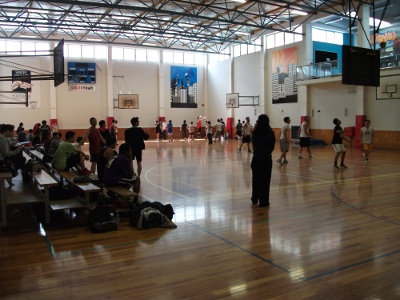Archive for March, 2012
Testosterone DHEA & Androgens in Pine Pollen
This is a breakthrough for me – especially at 43 with andropause about to kick my ass for good.
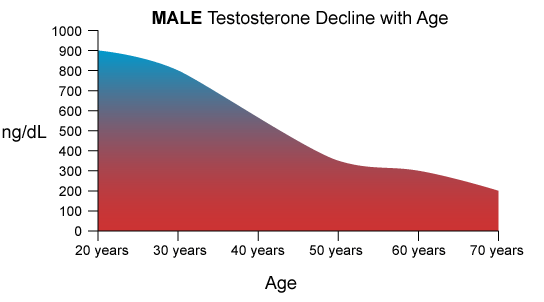
I just found out last week that “Pine Pollen” of all things is chocked full of male sex hormones and is the most potent plant steroid (sterol)
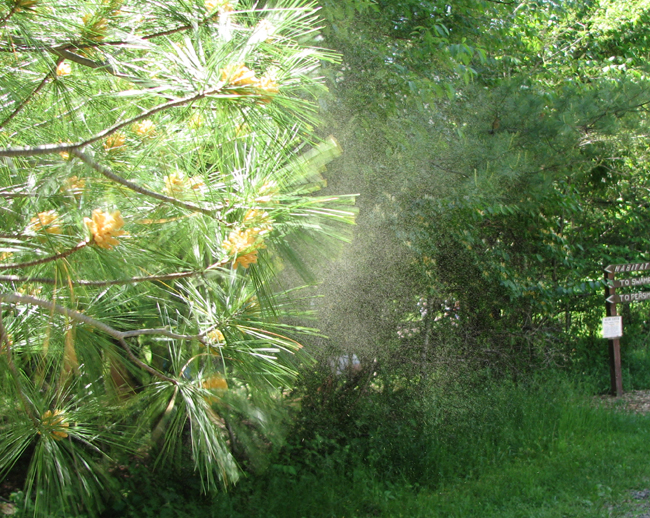
People seem to have a couple of points of confusion :
1. YES IT IS ABSORBED – but you must use a sub-lingual tincture – mix it with alcohol, let it cure for a month, then apply under your tongue 3x per day.
2. Does it work ? What the hell do you think? It contains Testosterone, DHEA, Androsterone, Androstenedione a full spectrum of amino acids, vitamins, minerals and a bunch of other stuff.
YES IT WORKS
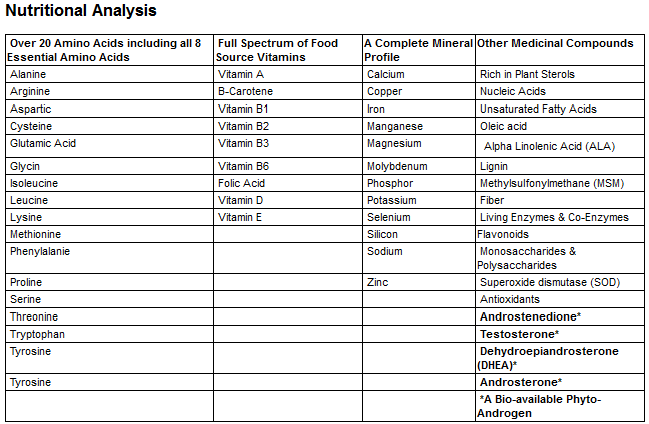
Ok so basically testosterone and DHEA are illegal here in New Zealand & most GP doctors are soft asses that bend over backwards to avoid physical exercise. I wouldn’t even bother with the medical BS required to get on hormone replacement here. Now I don’t have to worry about the quacks approval.

Pine Pollen is legal and abundant and best of all FREE.
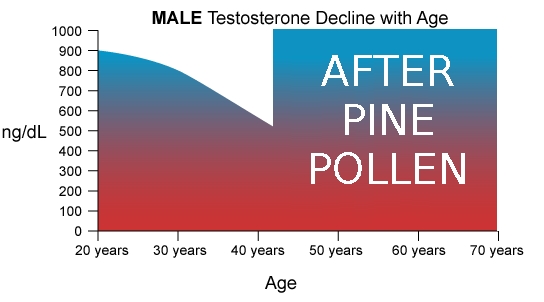
LOL this is what I would like my androgen profile to look like 😉
I must add though that there are a few other herbs you want to take with this stuff. For example as you get older there is a compound SHGB that converts testosterone to oestrogen which increases with age. You will need to take Nettle Root along with your pine pollen to prevent this from happening – otherwise the increased testosterone will turn against you. But the nettle root works so its not going to be a problem.
You can also add Asian and American ginseng, Saw palmetto and tribulus.
Look for the book “Natural Testosterone Solution” for more information.
Training When You are Sick or Injured
In this post I’m talking about minor ailments like colds or flu and minor sprains.
Basically all aerobics and heavy weights should cease for a few days. You want to rest – especially with colds and flu.
Lets talk about the training that you can do.
1. Stretching including isometric stretching
2. Occlusion Training – very light high rep weight training using occlusion
3. If you are into martial arts its still OK to do some Iron Palm or Iron Body style training
That’s it – illness and injury are a time for rest. Don’t fight against recuperation – go with the flow.
Heres the gym I train at
I started training when I was 16 and began using this gym at 19. That’s 23 years I’ve been going to this same gym.
Its the Youthtown gym in Auckland, New Zealand. They have a shooting range, squash courts, basketball, heated pool and the gym. For many years the New Zealand Olympic lifting team used to be based here but they moved on.
I have a bunch of gear at home too like kettlebells, weight vest and random equipment.
Meridians and Nadi’s Finally Vindicated by Modern Science
This is potentially mind blowing staggering news. But rather than explode onto the scene its coming out in trickles. In fact the lid was blown 50 years ago and hushed up in the communist block.
I know that the meridians are not simply the nerves as there are bioelectric characteristics that prove they exist in the exact form described in all of the literature. There are also bioelectric links with embryonics and regenerative medicine. Bonghan Channels put it into a whole different perspective. I will spend some time gathering information and research this.
In the 60’s a North Korean scientist found and mapped microscopic fibres running along the meridians with nodules at the accupoints. The fibres were translucent and 1/5 the width of a hair and often among fascia or lymph so almost impossible to see without correct stain. Stuff that small was observable thousands of years ago as there are hundreds of lenses found that were used for magnification also the Chinese devised other methods such as water magnifiers.
The Bonghan ducts follow the meridians and the spread into a network around organs and mesh with the fascia. Inside the ducts is acidic fluid and “ADULT STEM CELLS”
Ha haaa yes its a distribution system for stem cells. The channels conduct light, heat and are electromagnetically sensitive also. So the meridians or nadis now are proven anatomically although the research is ongoing at present.
Bonghan theory
The Bonghan(BH) system was proposed as an anatomical circulatory organ containing the anatomical structure of the acupuncture meridian system, i.e., anatomical structure of the meridian was found to be a part of a larger organ.
The Bonghan system is consisted of several subsystems; superficial BH system in the skin, intravascular BH system inside large blood and lymphatic vessels, organ-surface BH system on the surfaces of various internal organs and neuro BH system associated with the nervous system.
History
The National Acupunture Meridians Research Institue, led by Bong Han Kim, discovered the “Substance of Kyungrak” which constitues the material foundation of the “Kyungrak theory” in the course of clarifying, on the basis of modern science, this theory which is of great importance in the classics fo Eastern medicine. The report on this discovery was published on August 18, 1961. After making futher research, it was established on November 30, 1963, that the Kyungrak system consists of Bonghan ducts and Bonghan corpuscles and that Bonghan liquor containing a rich amount of deoxyribonucleic acid(DNA) circulates this system. Later the National Acupunture Meridians Research Institue revealed the distribution of the Kyungrak system in the shole body and has since striven to bring to light its essential, biological significance.
On April 15, Bong Han Kim made a report on the results of the reseach at the Kyungrak Society of the Democratic People’s Republic of Korea. According to the report, Kim Bong Han made a thorough observation of the Kyungrak system, regarding it as a system of the circulation of Bonghan liquor. He made particluar efforts to dig donw the systematic structure of the Kyungrak system, the system of the circulation of the Bonghan liquor with a rich content of DNA which had hitherto been known to be existing only in the cell nucleus
Since 2002, Bonghan theory has been studied intenstively by the Biomedical Physics Laboratory in Seoul National University. The first finding was intravascular Bonghan duct in large blood vessels and lymphatic vessels of rabbits, rat, and mice.
Bonghan Ducts and Corpuscles
The component parts of Bonghan system are Bonghan ducts and Bonghan corpuscles. The Bonghan corpuscles and ducts can be classified into several categories, the common structure of which being as follows:
1. The Bonghan duct is a bundle of very fine Bonghan ductules with a diameter of 5 – 15;um. The wall of the Bonghan ductile is composed of endothelial cells as in the case of the blood and lymphatic vessels. But the endothelial cells of the Bonghan ductule are very characteristic. The endothelial cell nucleus is of rod shape and abundant in chromatin and the electronic density is so high that its inner composition is hardly discernible in electron micrographs. The boundary of cytoplasm is not clear and only rod-shape nuclei arranged in and orderly manner on the wall of the Bonghan ductule can be seen. The wall of the Bonghan ductule is very thin; about 0.1 – 0.2 um in electron microscopic observation. Besides, the Bonghan ductule has outer membrane, which is composed of argyrophile fiber and outer membrane cells. The outer membrane cell takes a form similar to smooth muscle and it is presumably the contractile element of the Bonghan ductule. Several ductules are bound by a surrounding membrane.
2. The Bonghan corpuscles are, without exception, linked with Bonghan ducts. The Bonghan corpuscles are formed through the enlargement, ramification and anastomosis of Bonghan ductules. The stroma covering the corpuscles is reticular tissue. This tissue is connected with the outer membrane of the Bonghan ductules and the surrounding membrane of the Bonghan ducts. The Bonghan duct contains basophilic granules, basophilic structures, nucleus-like structures and specific cells. They are related with the reproduction of formed elements
Intravascular Bonghan System
It is a system of Bonghan ducts and corpuscles distributed inside the blood and lymphatic vessels. Inter-linked Bonghan corpuscles and ducts are systematically distributed in all the arteries, veins, lymphatic vessels and in the heart. The inner Bonghan ducts lie freely in the flow of blood and they are ramified together with blood vessels. The Bonghan ducts inside the lymphatic vessel are visible from outside. The structure of the inner bonghan corpuscle with a diameter of 0.1~0.2mm is similar to a small hematopoietic organ.
As in ithe organs producing erythrocyte, leucocyte and lymphocyte, serials of their young cells are found in the net eyes of the reticular structure. The hematopoietic of the inner Bonghan corpuscles has been confirmed through various experiments. But their function is not confined to this. Groups of parenchyma cells of the organ and various other cells, basophilic substance and nucleus-like cells are found in these corpuscles.
Organ Surface Bonghan System
The Bonghan ducts and corpuscles are distributed in a reticular form on the surface of the internal organs. The structure of this Bonghan duct is the same as the intravascular Bonghan ducts and it is linked with the intravascular Bonghan system through the wall of the blood vessel.
see also:
http://books.google.co.nz/books?id=H2vzeIkg-jcC&pg=PA38&dq=bonghan&hl=en&sa=X&ei=bJVNT6z3NcrgmAX5gvX0Dw&ved=0CEwQ6AEwBQ#v=onepage&q=bonghan&f=false”
http://www.springerlink.com/content/978-1-4614-0601-3#section=981555&page=1
http://primosystem.wikispaces.com
There is plenty of biophysics research on this now. I am thinking this is a way for the body to very specifically target tissues with stem cells. Stem cells in the blood are transported willy nilly.
Also as the fibre network is EMF sensitive this may be the natural control mechanism for determining where the stem cells are deposited. Based upon light, and bio electromagnetic tissue polarities etc. We know that pressure etc also affects the meridians and thanks to Bonghan theory we now know exactly what the Qi in the meridians is.

